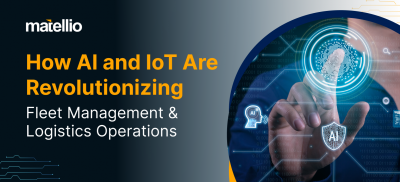
The education sector has received major reforms in the past few years, not just in the rules and regulations but also on the technology front. Educational institutions of the present times have modernized classrooms, automated infrastructure, and much more. The use of AI and machine learning in education has made a drastic change in the overall performance of the students. On the commercial front, these AI-based educational softwares are doing extremely well. As per Statista, the global AI software market is projected to grow at a rapid speed and will cross the market valuation of 126 billion US dollars by the year 2025
If you are thinking of implementing AI and machine learning into your educational institutions, it might be a good time. Entrepreneurs around the world are more than interested in building AI and ML educational solutions that can take the quality of the process to the next level. These technologies have enhanced the results along with the quality of education being delivered in these institutions. Let’ dig deep and find out the role of machine learning in transforming the education sector.
What is Machine Learning?
Machine learning can be described as an application of artificial intelligence which delivers systems the ability to learn automatically while improvising at every step using past experiences. It can learn from the past feed of data without any dedicated programming involved. It has been developed to enhance the performance of systems and, more importantly, to learn on its own with all the data which it processes. How does it learn? It uses the data sets that it has already processed and observes the same to find a pattern that can be related logically. Further, it uses that pattern to predict the next move of the user based on the available data.
Machine learning has been developed with the simple goal that it should learn like humans, and using its ability; it should deliver insights, recommendations, and more. The use of semantic analysis has simply enhanced its ability to understand the meaning of the data text instead of considering them as a sequence of keywords.
Machine learning has majorly two types of techniques that its algorithm uses to train a model based on known input and output data to predict the upcoming outputs. It can also be used to facilitate unsupervised learning. These methods play an important role in machine learning in education sector. Here are the two methods used by machine learning.
Supervised Machine Learning
It can be defined as a subcategory of machine learning and artificial intelligence. Its working involves the usage of labeled datasets to train its algorithms that either classify the data or separately predict the outcomes. As a part of the validation process, it adjusts the weight of the input data that is fed into the system until the model is properly fitted. It is known to solve a number of real-world problems at scale for various industries, which includes the education sector.
It uses training data sets to teach models to produce the expected results. Think of these training data sets as one of the guide books that consist of problems and solutions and the methods used to solve the problem. Here, the training data sets have correct inputs and outputs, which the model learns as time passes. The algorithm of this method uses the loss model until the error is minimized.
Unsupervised Machine Learning
As the name suggests, this method applies have no supervision; means it does not have any data lets labeled as before. With unlabeled data, it finds different patterns in the data sets to determine the solution of the associated problems. Its common use lies in exploring the data while drawing inferences from these data sets to reveal the hidden structures from the unlabeled data. The system works by revealing the hidden pattern. It is commonly used by various subject matter experts around the world who are unsure of the pattern in an unlabeled data set.
There is another method which is known as the semi-supervised machine learning method. It can be described as a model that uses both labeled and unlabeled data sets to determine a suitable solution to a given problem.
Advantages of Machine Learning in Education Sector
Artificial intelligence and machine learning in education have a ton of advantages as it not only simplifies the process but also delivers clever insights that help in predicting various results. Machine learning and AI play an important role in revolutionizing the education sector by enabling the customization of the teaching material and the course material that further helps in enhancing the effectiveness of the process. Here are some of the benefits that come along with the application of artificial intelligence and machine learning in education sector.
1. Customized Assessments of Students
Machine learning helps in assessments of the students on a whole different level. It understands the ability of each student by a customized set of assessments based on the previous performance history of students. It helps in boosting confidence in students and a new zeal for learning. Teachers understand the best fit for each of their students by implementing the technology in their working process.
2. Data Mining
Machine learning can also be explained as the data mining process that collects various data sets over time and analyzes them to find a pattern and determine a solution for a given problem. Now, these capabilities of this technology are helping the teachers in accessing all the data related to their students in a single place. This collection of data helps the teachers identifying the struggling students and designing a special course for them to succeed. Apart from the teachers, it also helps in carrying the administrative weight.
3. Intelligent Performance Insights
Artificial intelligence and machine learning in education sector are doing a great job in predicting various parameters that help in enhancing the overall service quality of the institution. One of the main benefits includes predicting the results of the students. With huge data sets, the technology analyzes each student and finds out the weakest ones, and suggests a special course to enhance their performance.
4. Customized Learning
Apart from predicting results, education institutions can use machine learning and artificial intelligence in curating specialized courses for the weaker student population. These courses are result-oriented as they are backed with solid research and analysis. They target only those areas where the weaker students need help. Customized learning has proven to be extremely beneficial, and it has enhanced the results of a number of students across various organizations.
5. Intelligent Grading
With curating customized lessons, machine learning in education sector is also helping in bringing reform in grading the exams or the assessments. It rules out the possibilities of biased marking and uses various tools to grade each assessment with logic. Fair grading helps teachers and students in realizing where they are lacking and which part of their curriculum needs to be improved.
6. Efficient Schedule Organization
Machine learning and artificial intelligence in the education sector also helps in curating efficient schedules, which facilitates maximum results. With traditional methods, the schedules of the teachers and other staff remain unproductive due to various reasons, but with a perfectly organized schedule, teachers know where they need to be at what time. This enhances time management and ultimately increases the students learning experience.
Also Read: A Complete Guide on eLearning Software Development
Role of Machine Learning in Education Sector
As per trusted sources, the market size of AI/ML in education was around $4 billion in 2022, and the market will grow at a CAGR of 10% between 2023 to 2032! Clearly, the benefits of NLP, self-learning models, and conversational bots are overcoming the complex challenges of the education sector.
Today, machine learning helps the education sector in automating various processes, from organizing schedules to customizing courses as per the requirements of the students. It has been changing the education sector for the better with its enhanced capabilities. You can also hire machine learning developers to enjoy the same benefits and become a part of the successful league of top eLearning brands.
Here are a few perks of ML in education:
1. Robust Home Security
Predicting outcomes based on the existing data sets in the systems has really helped educational institutions. Machine learning has proven to be really helpful in creating a customized curriculum for every student based on their needs. By predicting the outcomes from all the available data about the performance of the students, it easily targets the students that need help in certain parts. The outcome of this analysis has enhanced the overall results of various educational institutions throughout the world. It has enabled teachers to focus more on every student, which was not possible with traditional teaching methods. It lays out the exact problem along with a logic-based solution to enhance the results.
2. Optimized Workflow
You all have attended schools; there were times when teachers forgot to attends their classes due to unorganized schedules, which resulted in the delay in completion of the syllabus. On the other hand, the teachers would find it difficult to track the performance of various students as they have to maintain different logs for each student. Well, with machine learning and artificial intelligence, the scenario has completely changed. It helps in organizing the schedules of the teachers, which reduces the number of missed classes. Apart from the schedules, it maintains all the records of the students with intelligent insights for the teachers to use. Further, it has simplified the overall workflow by organizing each role as per the abilities of the concerned staff members.
3. Smart Learning Systems
The traditional method of teaching involved books, black/whiteboards, and some verbal conversations. Those methods lacked innovations, but now with the implementation of machine learning and artificial intelligence in the education sector has changed the game forever. Now, teaching a lesson to a class involves more than some 2D diagrams on the black/whiteboard. Teaching with digital means has changed the way of receiving education in many ways. Now, teachers could show the simulations of an experiment to the students instead of simply drawing the diagram and explaining the mechanism. Animated lessons help students in grasping the message much faster.
Apart from smart learning in physical classrooms, education has also grasped a stronghold in the virtual world. In these times of pandemic, the term virtual learning is being used frequently. With online learning, the scenario has completely changed; now, the curriculum uses videos, animated graphs, and much more, which makes learning fun and interactive. Various institutions have implemented the concept, and the results are outstanding.
4. Mobile Education Solutions
Gone are the days when teaching or learning could only be done in a physical classroom. With the help of artificial intelligence, machine learning, and various other technologies, the education sector has implemented huge changes that introduced the E-learning platforms and virtual classrooms. Not only it is the most cost-effective method of learning but also the most feasible way. It enhances time management, reduces travel, promotes effective learning, and much more. Students from around the world can learn effectively from anywhere provided they have a working internet connection.
E-learning platforms have played a large part in the virtual education revolution. These applications have intelligent algorithms that help organize the curriculum even more effectively. It delivers each student their key metrics, which helps them in realizing their strength and weakness in various subjects. It delivers customized lessons for them to enhance their performance.
5. Tracking Performance
Learning can never be complete without performance tracking. Machine learning along with bid data analytics have proven to be an effective combination that helps in tracking the performance of students at educational institutions. It delivers accurate assessment results with logical grading and delivering the results along with some intelligent insights to the students as well as teachers to improve the performance. Tracking of performance has helped teachers and schools in alerting them about the varied performance of each student, which helps them in taking appropriate actions.
Also Read- Artificial Intelligence in Education: Benefits, Application and Development
The Final Takeaway
Artificial intelligence and machine learning are the most preferred technologies in the world when it comes to smart solutions. Apart from all other sectors, the education sector needs them the most as innovative learning can work wonders. The traditional methods of teaching are good at some places but not as intelligent and effective as the modern education platforms. AI and machine learning have uplifted the overall ed-tech sector and created immense opportunities. Education institutions around the world are realizing the need and switching to smart learning platforms development.
Matellio has vast experience in developing smart solutions for the education sector. Our team of proficient experts is well trained and knows every in and out of the education software/application development. We have created various sophisticated education solutions with excellent feedback from the clients. What are you waiting for? Get in touch with our experts to create a flawlessly engineered AI-based education solution with advanced features and an ultra-modern tech stack to get ahead of the competition. Book a 30-min consultation call with our experts now!





